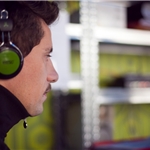El 11 de septiembre de 2001 (11S) a las 8:45h de la mañana el Boeing 767 de American Airlines que cubría el vuelo entre Boston y Los Ángeles, se estrellaba contra la Torre Norte del World Trade Center (WTC). A las 9:03h, un Segundo Boeing 757 se empotraba contra la Torre Sur del complejo de la famosa zona financiera de Manhattan ante la mirada atónita del mundo entero que contemplaba a través de las principales cadenas de televisión norteamericanas la humeante Torre Norte.
Desde esta óptica, el primer acto histórico que marcó el inicio del siglo XXI no fue el descubrimiento de la máquina de vapor (siglo XVIII), el invento de la locomotora (siglo XIX) o el primer vuelo en aeroplano (siglo XX), ni ningún descubrimiento o desarrollo tecnológico que cambiara el rumbo del progreso, sino que fue una acción violenta, una acción dirigida contra uno de los iconos de una de las ciudades más importantes del mundo. Un ataque a un edificio [arquitectura] y a una ciudad [urbanismo]
El 11S establece así los elementos y agentes que definen el devenir urbano hacia un estadio de inseguridad urbana que en determinados foros justifica la militarización y control del espacio urbano como elemento de prevención y protección de las grandes urbes occidentales.
Panoptismo
A finales del siglo XVIII, el filósofo Jeremy Bentham inventó el panóptico, el primer ejemplo de arquitectura para la vigilancia con el fin de mejorar el control en los centros de encierro: hospitales, centros de producción o prisiones. Con ello, descubre la vigilancia como tecnología de control. El panóptico es la aplicación de una tecnología de control espacial, siendo la mirada su herramienta principal. Una tecnología cuyos principios básicos la modernidad asumirá como propios y aplicará no solo a centros de encierro, sino también a la planificación urbana, ya que el control de los cuerpos y la masa se convertirá en algo básico para el poder político desde finales del siglo XVIII hasta nuestros días.
La mirada controladora y obsesiva será el principio panóptico que regirá en las sociedades distópicas del período de entre guerras en la literatura fantástica del siglo XX, pero también en los estados socialistas totalitarios del mismo periodo. Primero como principio panóptico y después como mecanismo de control social y urbano, la vigilancia se convierte en principio organizador de la ciudad. Esa mirada como tecnología de control se ve implementada con la aparición de las nuevas tecnologías (TIC), que dota a la ciudad de la infraestructura necesaria para ejercer esa vigilancia y control. Pero las nuevas tecnologías no dotan únicamente de infraestructura a la ciudad y sus órganos de gestión, sino que también irrumpen y transforman tanto el espacio público como el privado. De esta manera y a través del uso que de ellas hacen los usuarios, se produce un efecto inverso al habitual, en el que se privatiza el espacio público mediante el uso de dispositivos móviles por un lado y se hace pública la actividad intima y privada del espacio doméstico por otro.
Prácticas espaciales de control
El pánico social de los países de Occidente a ser atacados o asaltados especialmente en situaciones de guerra asimétrica, ha llevado a las minorías gobernantes a intentar reorganizar y definir la ciudad contemporánea a partir de la seguridad como agente primordial. Se trata de discernir cuales son las prácticas espaciales que están configurando el paisaje urbano después del 11S, así como las consecuencias que la aplicación de este tipo de estrategias tienen en la ciudad del siglo XXI.
Para ello, este trabajo se apoya en el análisis de dos ensayos concretos de prácticas espaciales contemporáneas muy próximas en el espacio y en el tiempo.
El primero de ellos consiste en el estudio de las cumbres de los grandes agentes económicos mundiales –G8, G20, Fondo Monetario Internacional, Organización Mundial del Comercio, etc.-. Estos encuentros han sido motivo de movilizaciones de los movimientos sociales, antisistema, sindicatos y ONGs que escenifican de esta manera el desacuerdo social con las medidas económicas impuestas por estos organismos. Como consecuencia de estas protestas la ciudad elegida cumbre del encuentro se ve sometida a una militarización y transformación espacial instantánea muy visibles y sofisticada.
El segundo de ellos estudia el seguimiento y monitorización que hizo la sección tecnológica del diario británico The Guardian durante los disturbios que tuvieron lugar en agosto de 2011 en Londres. Interesa destacar dos factores comunes en todos estos hechos: el primero es un empoderamiento civil y enfrentamiento a los poderes políticos y de mercado; el segundo es el uso de las redes sociales y dispositivos tecnológicos -ordenadores, smart phones- como medio articulador, independiente y alternativo a la información que facilitan los gobiernos y retransmiten los medios de comunicación.







